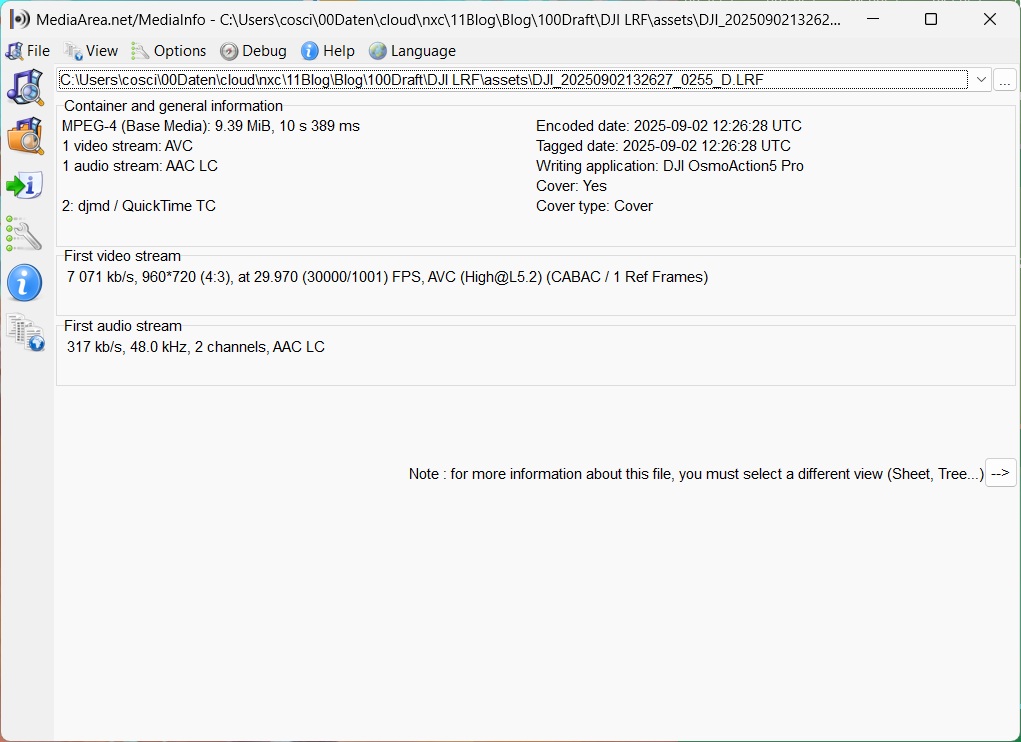- Panorama Mode in the DJI RS 3 Mini
- Creating HDR Panoramas Manually
- Nodal Point and Nadir – Why Alignment Isn’t Perfect
- What is the Nodal Point?
- What is the Nadir?
- Example: Shots with 20–50 mm Lenses
- 360° Panorama in Wettenberg
- Recommended Stitching Software
- Final Thoughts

The DJI RS 3 Mini Gimbal (*) isn’t just for buttery-smooth video. It can also be used to capture precise 360° panoramas – ideal for indoor spaces, architecture, and virtual tours. To get the best results, however, you need to understand how to set up your camera and gimbal properly.
In this article, I’ll show you how to use the DJI RS 3 Mini (*) with a camera like the Sony A7R II to shoot stunning panoramas, including HDR versions, and recommend software for stitching the final images.
Panorama Mode in the DJI RS 3 Mini
The Ronin app includes a dedicated Panorama Mode. To ensure your automated panorama works correctly, you’ll need to set the following parameters:
- Sensor Type: Full Frame, APS-C, or Micro Four Thirds
- Focal Length: Important for calculating the number of images
- Overlap: Typically around 30–40%
- Interval Time: Delay between shots (5–10 seconds for HDR, 1–2 seconds otherwise)
🔧 Example: With a 24 mm lens on a full-frame sensor, a 360° panorama typically requires a grid of 8 columns × 5 rows = 40 shots.
Creating HDR Panoramas Manually
The app doesn’t offer a native HDR panorama mode. But there’s a workaround:
- Enable AEB mode (Auto Exposure Bracketing) on your camera (e.g., ±2 EV for 3 shots on the Sony A7R II).
- In the Ronin app, set the interval to 4–6 seconds to allow the camera to complete its exposure series.
⚠️ Don’t set the interval too short, or the camera buffer might overflow and skip exposures!
🕒 With 3 exposures per position and 40 positions total, an HDR panorama takes about 4 minutes. A non-HDR version takes roughly 60 seconds.

Nodal Point and Nadir – Why Alignment Isn’t Perfect
A common issue with gimbal-based panoramas is parallax errors due to misalignment with the nodal point. The DJI RS 3 Mini (*) balances the camera by its center of gravity – not the optical center of the lens.
What is the Nodal Point?
The nodal point is the optical center inside the lens where light converges. For accurate panoramas, the camera must rotate around this point to avoid misalignment in overlapping images, especially with close subjects.
What is the Nadir?
The nadir is the point directly below the camera (the vertical downwards direction). In full spherical panoramas, this point is often filled in or “patched” during editing.
📌 Bottom Line: The DJI RS 3 Mini is still great for outdoor and landscape panoramas, where subjects are far from the camera.
Example: Shots with 20–50 mm Lenses
| Focal Length | Grid | Shots | Duration (HDR, 5s Interval) | Resolution |
|---|---|---|---|---|
| 24 mm | 8×5 | 40 | ~4 minutes | ~450 MP |
| 35 mm | 11×7 | 77 | ~7 minutes | ~900–1000 MP |
| 50 mm | 14×9 | 126 | ~18 minutes | ~1900 MP |
360° Panorama in Wettenberg
~480MP, Sony A7R2, Sigma Super Wide 24mm f11 (Canon FD Lens), 33.392*14.531 Pixels

Download: 🔗480MP Panorama, Full Size
Recommended Stitching Software
After capturing your images, you’ll need to stitch them into a complete panorama. Here are some great options:
- Lightroom Classic – Rarely works with full 360° panoramas; stitching often fails
- PTGui – Professional software with HDR and 360° support
- Hugin – Powerful and open-source
- PanoramaStudio 3 / 4 Pro – User-friendly, supports 360° export and HDR (in Pro version)
- Affinity Photo – Supports panoramas but not full spherical
- 3D Vista & Pano2VR – Stitching Panoramas and creating Virtual Tours(Self Hosted and uploading to Google Street View)
Final Thoughts
With the right setup, the DJI RS 3 Mini can capture impressive panoramas – even HDR panoramas. While the lack of nodal alignment makes it less suitable for indoor or close-up scenes, it’s still a powerful tool for landscape and outdoor photography.
If you have any questions about shooting 360° panoramas, HDR, or stitching tools, feel free to comment below!
(*) Affiliate Links



